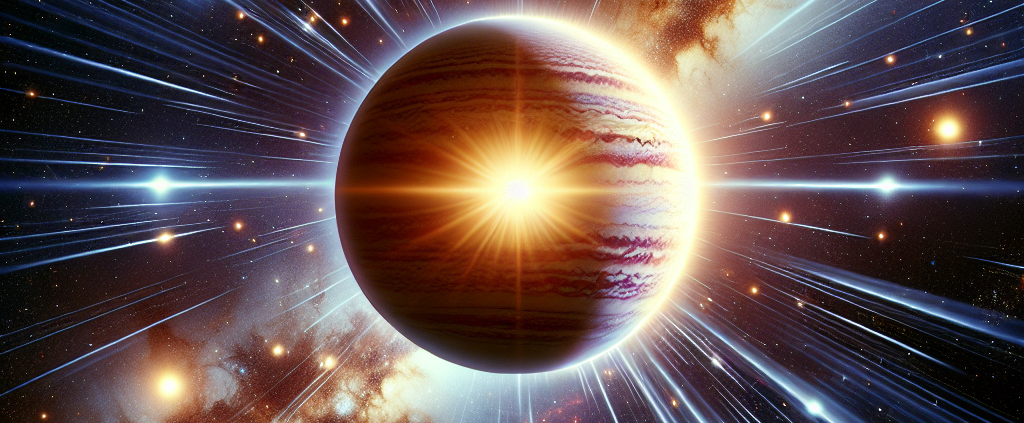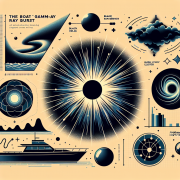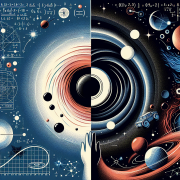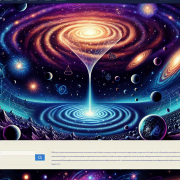Discovering TOI-715b: A New Super-Earth That Could Harbor Life
The Discovery of TOI-715b: A Glimpse Into Potential Habitability Beyond Earth
Recent astrophysical research has unveiled the existence of TOI-715b, a super-Earth located approximately 137 light-years from us, orbiting an M-dwarf star. This planet presents intriguing characteristics, such as its 1.55 times Earth’s radius and its position within the habitable zone of its star. Additionally, another planetary candidate within this system appears to be Earth-sized, potentially marking the smallest habitable zone planet discovered by the Transiting Exoplanet Survey Satellite (TESS) upon confirmation.
About the Host Star: An Average Red Dwarf
The host, TOI-715, is identified as an M-dwarf or red dwarf star, possessing roughly a quarter of our Sun’s mass and radius. Its dim nature coupled with TOI-715b’s close proximity, completing an orbit every 19 days, positions this super-Earth comfortably within the star’s conservative habitable zone (CHZ).
Research Highlights and Significance
The discovery is detailed in a study published in the Monthly Notices of the Royal Astronomical Society, spearheaded by Georgina Dransfield from the School of Physics & Astronomy at the University of Birmingham. The findings underscore the planet’s residency in the habitable zone, shedding light on the quest for liquid water-bearing planets beyond our solar system.
| Aspect | Details |
|---|---|
| Planet Name | TOI-715b |
| Orbital Period | 19 days |
| Radius | 1.55 Earth’s radius |
| Host Star | M-dwarf (Red Dwarf) |
| Distance | 137 light-years |
Relevance of the Conservative Habitable Zone
The concept of a conservative habitable zone (CHZ) plays a critical role in identifying potential habitable exoplanets. Defined by receiving solar insolation between 0.42 and 0.842 times that of Earth, planets within this zone, like TOI-715b, are prime candidates for having liquid water.
The Radius Gap: A Cosmic Puzzle
One intriguing aspect of TOI-715b’s discovery lies in its position within the so-called small planet radius gap, specifically between 1.5 and 2 Earth radii. This gap, also known as the Fulton gap or the photoevaporation valley, suggests planets either start larger and lose mass or bypass this gap entirely during formation. The existence of TOI-715b within this gap provides a unique opportunity to study planetary mass loss and formation theories.
Prospects for Habitability
The James Webb Space Telescope (JWST) is set to play a pivotal role in further examining TOI-715b, offering insights into its atmospheric composition. Its proximity to the host star makes it an ideal candidate for high-resolution spectroscopic studies. Despite the required follow-up observations, the low magnetic activity of TOI-715 and the absence of stellar flaring observed so far add to the hopeful indicators of habitability.
- Age of Star: Approximately 6.6 billion years.
- Magnetic Activity: Low (favorable for habitability).
- Planet’s Orbit: A tight 19-day completion around the host star.
Future Observations and the Path Forward
The eagerly anticipated observations by the JWST will not only unveil more about TOI-715b’s atmospheric properties but also potentially affirm its habitability. In addition, the possible confirmation of another habitable zone planet within this system could further highlight the TOI-715 system’s significance in the ongoing search for life beyond Earth.
This exploration into TOI-715b’s world stands as a testament to our undying curiosity and the relentless pursuit of understanding our universe. As we stand on the cusp of new discoveries, the potential for habitable worlds like TOI-715b offers a beacon of hope and excitement for the future of exoplanetary science.
Read the original study as published by Universe Today.









Leave a Reply
Want to join the discussion?Feel free to contribute!